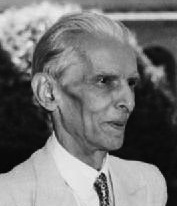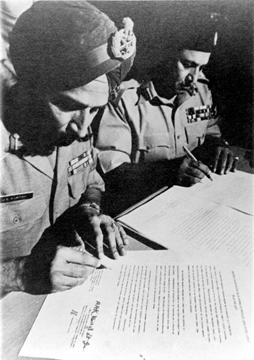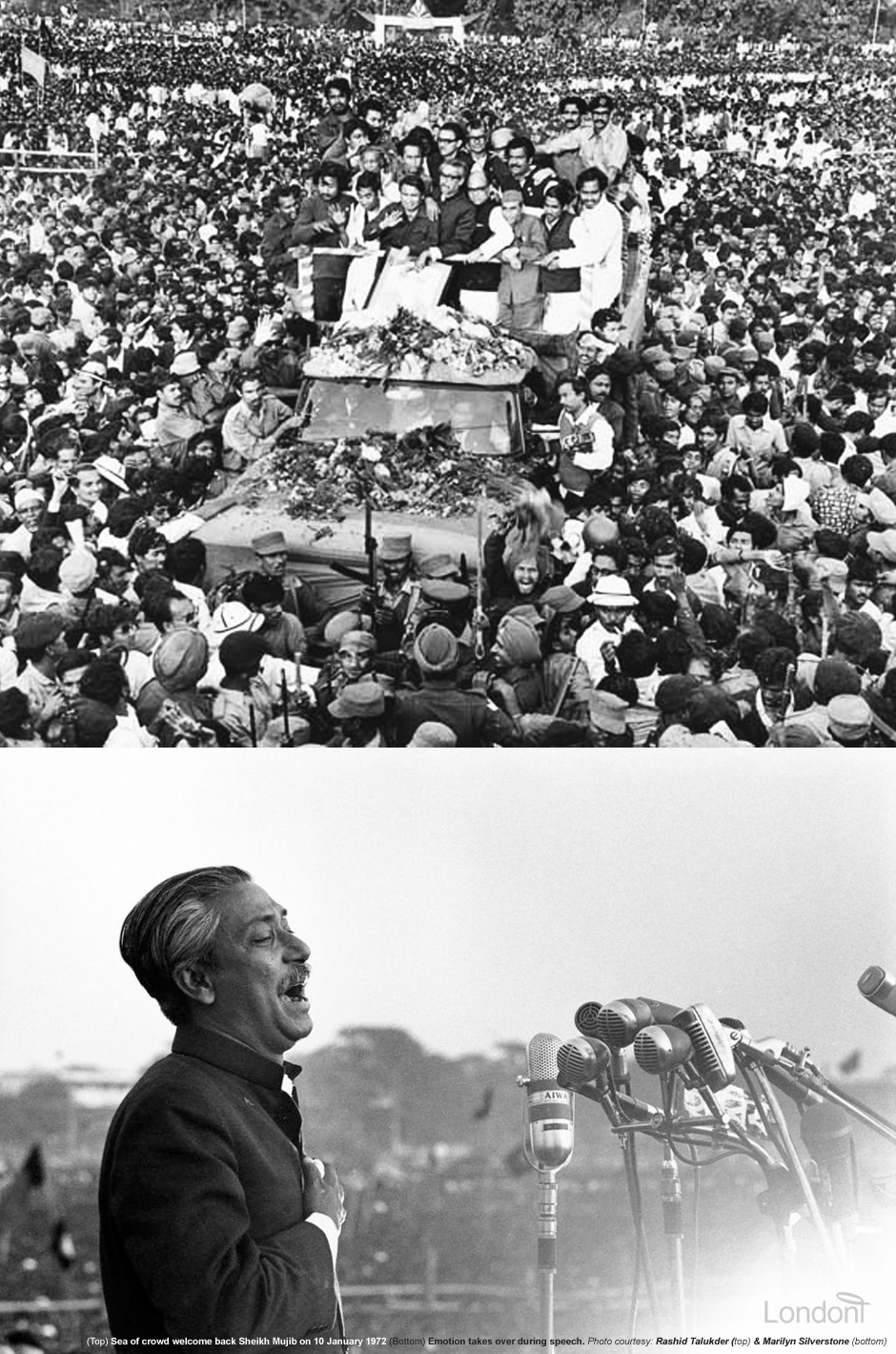The Liberation War and The Birth of Bangladesh
The War of Liberation in Bangladesh in 1971 took the world by surprise and has affected the politics of the country ever since. But how did it come about?
English
Last updated
Tue, 02-Jul-2024
The Liberation War and The Birth of Bangladesh
 The War of Liberation in Bangladesh in 1971 took the world by surprise and has affected the politics of the country ever since. But how did it come about?
The War of Liberation in Bangladesh in 1971 took the world by surprise and has affected the politics of the country ever since. But how did it come about?
The story goes back to the fight against the British for independence for India (which, before 1947, included Pakistan and Bangladesh). Many Muslims agreed with Muhammad Ali Jinnah that they would always be second-class citizens in a largely Hindu India and that they therefore needed a separate Muslim state of their own. Unbelievably, it was decided that regions where there was a Muslim majority would be part of Pakistan (even if they were in the middle of India - like Hyderabad, for instance) and areas where there were more Hindus would belong to India (although they might be surrounded by Muslim Pakistan). Of course, this was impractical and very soon the borders we know today became the de facto divide between Pakistan and India – except in the disputed region of Jammu and Kashmir.
The two main Muslim majority areas were West Pakistan (now called just Pakistan) and East Pakistan (now Bangladesh). So, two separate areas divided by all Northern India would be a single nation! The world had never seen anything like it before!
 And, to be frank, it was a singularly odd idea. After all, people in West Pakistan were culturally, even ethnically, very different from their fellow citizens in East Bengal. In East Pakistan, most people were more relaxed about religion; they traditionally ate fish and rice, while in the West they preferred meat and bread; they did not look similar either; and, most importantly, they spoke very different languages with different alphabets.
And, to be frank, it was a singularly odd idea. After all, people in West Pakistan were culturally, even ethnically, very different from their fellow citizens in East Bengal. In East Pakistan, most people were more relaxed about religion; they traditionally ate fish and rice, while in the West they preferred meat and bread; they did not look similar either; and, most importantly, they spoke very different languages with different alphabets.
Unsurprisingly, it was language where the problems began. In 1947, only months after Pakistan became a country, Muhammad Ali Jinnah, its leader, announced that "Urdu, and only Urdu" would be the national language. There was a perception among many West Pakistanis that this was the language of God. Naturally, the Bengalis, perhaps the most literate people in what was India, were furious. Even during British times, it was Bengali that they read on stamps and official forms.

The only Indian to get a Nobel Prize for Literature, Rabindranath Tagore, was a Bengali and wrote in that language. Now, the language of government was to be Urdu, which none of them could speak, read or write. Needless to add, this move would also deprive Bengalis of government or military posts and restrict their entry to universities as well. There were protests everywhere and on 21 February, 1952, some students were shot dead by the Army. (This day is still commemorated as Language Martyrs’ Day and at Bangladesh’s recommendation, has been adopted by the United Nations as ‘Mother Language Day’ globally.) Three years later, in 1955, the West Pakistanis gave up the struggle and Bengali was also recognised as an official language of Pakistan.
But language was only one of many issues the East Pakistanis faced. As the leader of the Awami League, Sheikh Mujibur Rahman, made clear time and again, the Bengali area of the nation produced most of the food and exports, yet the income was spent mainly in West Pakistan. However, Bangabondhu’s 1966 Six-Point Programme, aimed at rectifying this blatant inequality, was rejected out of hand by the (West) Pakistani government. It seemed like the Bengalis had got rid of the British only to adopt a new master!

To make matters even worse, the leader of the country, General Yayha Khan, stopped in Dhaka on his way to China a few short weeks before the 1970 election. At that time, East Pakistan was undergoing one of the worst natural disasters in decades. A cyclone had killed as many as half a million people. The world's journalists were there in droves to report on the catastrophe but, heartlessly, General Khan did not visit the worst affected areas or any of those who had lost their homes. Needless to say, the Pakistan government got a very bad press.
An election was called for December 1970, in which Sheikh Mujib and the Awami League won 160 seats in the 300-seat Parliament and so should have formed the government. But, shocked at the extent of the Awami League victory and not wishing to be ruled by Bengalis, the result was annulled by the Pakistani military. Predictably, wide-scale protests broke out in East Pakistan. These were put down by the Army and some Bengali Islamists with unprecedented severity. In Dhaka University alone, hundreds were murdered, especially Hindus.
On March 26th, 1971, Sheikh Mujib declared independence with the words:

"This may be my last message. From today, Bangladesh is independent. I call on the people of Bangladesh, wherever you might be and with whatever you may have, to resist the army of occupation to the end. Your fight must go on until the last soldier of the Pakistan occupation army is expelled from the soil of Bangladesh and the final victory is achieved."
In the course of the next nine months, ten million people fled across the border to India; thirty million more were displaced; and possibly as many as three million were killed, most of them civilians. Intellectuals were especially at risk of summary execution, as Pakistan set about killing the cream of Bengali intelligentsia. Bangladeshi forces, on the other hand, fought a guerrilla war, capturing many towns held by the Pakistani Army until it was only safe for the occupying army to leave their fortifications during the daytime. Finally, on 3rd December 1971, India joined the hostilities and, on 16th of that same month, Pakistan surrendered and Bangladesh was born.

It was not easy-going for the new nation even then. The USA and China along with several Middle Eastern countries, in particular, were against the establishment of the new state, not wishing to annoy their regional ally, Pakistan. However, the movement was unstoppable. Sheikh Mujib returned to Dhaka to a hero's welcome, with hundreds of thousands lining the streets of the capital to cheer him.
Not four years later, he was dead, gunned down in his own home along with all his family who were present in the capital. Only Sheikh Hasina and her sister, who were out of the country at the time, escaped the assassins' bullets.
In the decades since, Bangladesh has suffered from internecine political rivalry, with power fluctuating between the Bangladesh Nationalist Party (BNP) and the Awami League, with lengthy periods of military and caretaker governments punctuating its stormy but brief history. The Awami League for nearly forty years has been headed by Sheikh Hasina, while Khaleda Zia has led the BNP since 1982, a year after the assassination of her husband President Ziaur Rahman. The two politicians are widely known to have a difficult personal relationship and the latter is currently serving a lengthy prison term for corruption and has a mere handful of seats in Parliament.
For much of the time since independence, the country has been torn apart by political violence and general strikes which have, at times, paralysed the country for days, even weeks, on end. People were unable to leave their homes in much of the country for fear of being attacked or shot at. Thankfully, this situation has improved greatly in the past ten or so years.
 Despite all this, Bangladesh continues to improve its energy production and does so through many environmentally friendly projects. Infrastructure is also getting much better, with new roads making transport between the major cities more efficient. The country is a major textile producer and has encouraged foreign investment, especially in this area. Bangladesh is now poised to become a lower middle income country, according to the World Bank’s classificatory system.
Despite all this, Bangladesh continues to improve its energy production and does so through many environmentally friendly projects. Infrastructure is also getting much better, with new roads making transport between the major cities more efficient. The country is a major textile producer and has encouraged foreign investment, especially in this area. Bangladesh is now poised to become a lower middle income country, according to the World Bank’s classificatory system.
Literacy rates are not so impressive though and wealthy Bangladeshis often prefer to travel to India or Thailand for medical treatment. The increase in the numbers of private universities and hospitals does not always reflect good practice. Women's rights, on the other hand, have continually been growing, not least because of the efforts of Sheikh Hasina.
We can but hope that the progress we have seen since 1971 continues.
If you want to watch some videos on this topic, you can click on the links to YouTube videos below.
If you want to answer questions on this article to test how much you understand, you can click on the green box: Finished Reading?
Videos:
1. Partition of Pakistan and India (3:33)
2. A history of the Kashmir conflict(2:38)
3. Cultural & historical differences between east and west pakistan (13:14)
4. Urdu as the state language of pakistan(0:52)
5. 1952 , 21st February Language Movement(4:45)
6. Bangabandhu declaring six-point Movement(2:25)
7. 1970 election in east pakistan(1:45)
8. 1970 cyclone in east pakistan(1:09)
9. Merciless Mayhem The Bangladesh Genocide through pakistani eyes(6:01)
10. Sheikh Mujibur Rahman declares Independence of Bangladesh(7:20)
11. 25 March Genocide in Bangladesh In 1971(4:00)
12. Guerrilla war in 1971(3:13)
13. Bangabanhu’s speech on 7th march 1971(11:54)
14. The Victory – 1971, Emergence of Independent Bangladesh(0:45)
15. Bangabandhu returns home(14:15)
16. Bangabandhu Sheikh Mujibur Rahman”s assassination in 1975 (10:28)
